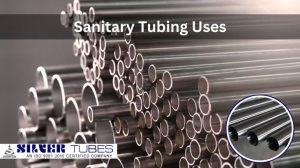Stainless steel tubes are versatile and durable materials, making them ideal for a wide range of applications. They are commonly used for piping systems, heat exchangers, and other critical components of industrial machinery. However, not all stainless steel tubes are created equal. Certain grades, such as 321 stainless steel, are more resistant to high temperatures and corrosion than others. This makes them a popular choice for custom projects that require superior performance and longevity. This blog post will explore how to bend and shape 321 stainless steel tubes to fit your unique design specifications.
What is 321 stainless steel tubes?
321 stainless steel tubes are a type of austenitic stainless steel that contains titanium, nickel and chromium for enhanced corrosion resistance. Due to its excellent oxidation and creep resistance properties, it is widely used for high-temperature applications, such as food processing equipment and exhaust systems. The tubes provide superior creep strength compared to other austenitic grades, making them ideal for hot environments. They also have strong heat-resistant properties, making them perfect for use in extreme temperatures.
Determine the Correct Tube Size and Wall Thickness
Before you start bending and shaping 321 stainless steel tubes, you need to know the tube’s correct size and wall thickness. This will help you select the appropriate bending tools and methods. The size and wall thickness will depend on the application and the amount of stress the tube will be subjected to. You can find this information in the tubing specifications provided by the manufacturer or by consulting an engineer specialising in custom stainless steel fabrication.
Choose the Right Bending Tool
Select the right bending tool once you know the correct size and wall thickness. There are several types of bending tools, including manual, hydraulic, and electric. Manual tools are suitable for small-scale projects, while hydraulic and electric tools are better for large-scale projects that require precision and consistency. Be sure to read the instructions and safety guidelines provided by the manufacturer before using any bending tool.
Use the Right Bending Technique
The correct bending technique is crucial for producing high-quality, accurate bends in 321 stainless steel tubes. The two most common bending techniques are mandrel bending and roll bending. Mandrel bending uses a mandrel, which is a cylindrical metal rod, to support the inside of the tube as it is bent. Roll bending uses a series of rollers to gradually bend the tube. Mandrel bending suits tight bends and complex shapes, while roll bending is better for large-radius bends.
Apply Heat as Needed
321 stainless steel has a high resistance to heat, but applying heat can make it easier to bend and shape the tube. Heat the tube evenly with a heat gun or propane torch until it becomes pliable. Be careful not to overheat the steel, which can cause it to warp or crack. Use a heat-resistant glove to protect your hands while you work.
Inspect the Finished Bends
Inspect the bends carefully for flaws or cracks once you have bent and shaped your 321 stainless steel tube. Use a straight edge or a level to check that the bends are even and accurate. Any imperfections can weaken the tube and reduce its lifespan. Make necessary adjustments or corrections before installing the tube in your custom project.
Conclusion:
Custom projects requiring stainless steel tubing demand high precision and expertise. Knowing how to correctly bend and shape 321 stainless steel tubes is essential for achieving a successful outcome. Following these tips, you can produce strong, durable, and accurate bends that meet your unique specifications. Remember to select the correct size and wall thickness, choose the right bending tool, use the appropriate bending technique, apply heat as necessary, and inspect the finished bends for imperfections. With practice, you can create high-quality custom stainless steel tubing for any project you undertake.






